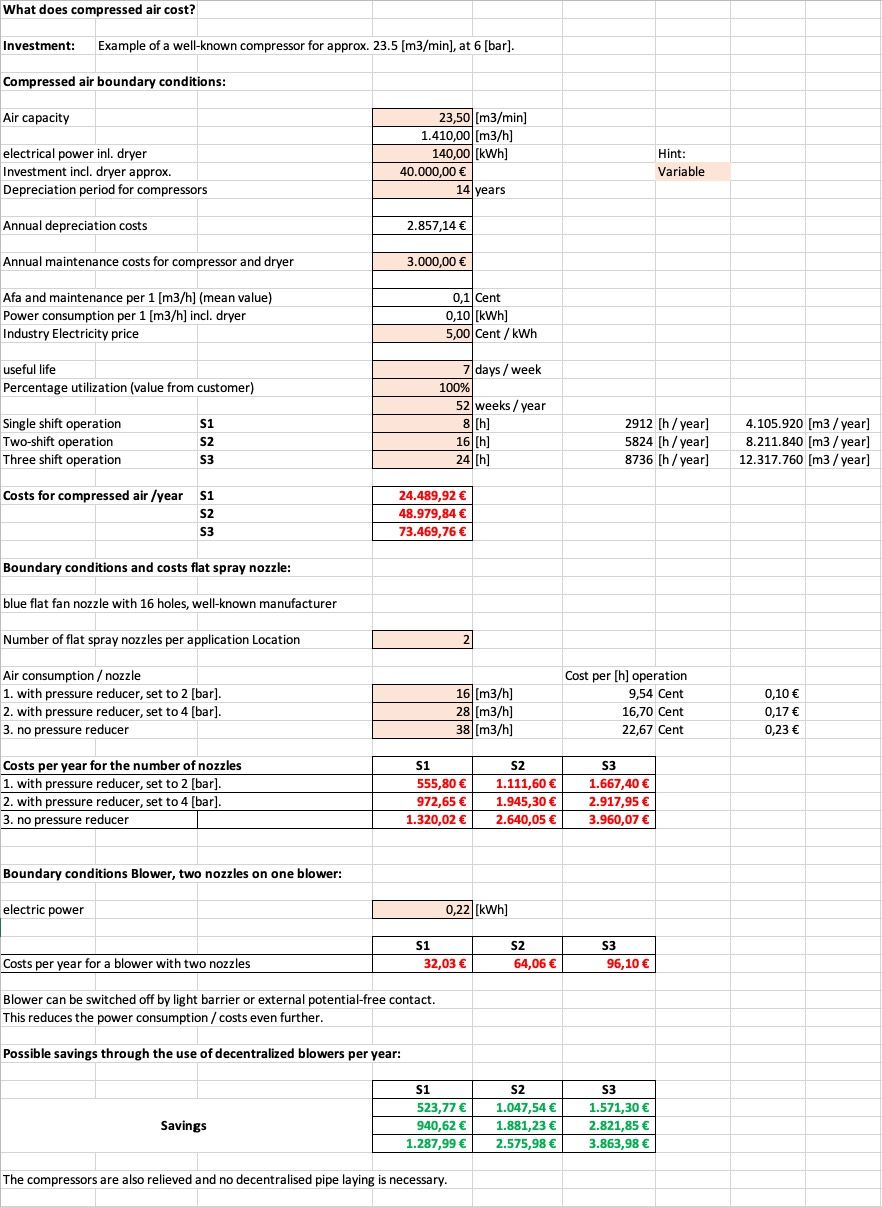We are well used to pneumatics, are enthusiastic about the solutions, but ...
Ecological as well as econimical considerations encourage companies to save energy. Usually it is about electricity, gas or oil. You minimize the uptime of your equipment, send it to standby, whenever possible. You chose the cheapest supplier. You analyze for any potential waste of energy. But, at the bottom line, it often turns out to gain only minimum savings.
Still hardly anybody is aware of the hidden potential in his compressed-air supply and few actually analyze these costs.
According to the motto "No data, no action": Well-known manufacturers offer an "Energy Saving Service" in their portfolio. A compressed air consumption analysis can be carried out. Repeating this measurement frequently will yield a performance indicator for you to judge the efficiency of your compressed-air supply. Deviations can give rise to further analysis and may end in successfully eliminating leaks.,
There is also another method: Visit your shop-floor on Sunday (if production is not running then). Larger leaks may be easily detected by the hissing sound in the quiet factory. There your cash goes down the drain.
Let's look at one of our solutions and evaluate the costs.
Compressed air is often used to clean workpieces. In the ophthalmic lens industry, flat jet nozzles are found in various places, used to clean lenses at crucial production steps. what´s the price for this compressed air?

Real example from a production. How many flat spray nozzles do you use?
In general, compressed air is available in the compressed air network of a company at 6 bar. It can be assumed that approx. 5 bar is released into the air and approx. 1 bar actually reaches the workpiece.
The calculation example above shows that these two flat fan nozzles amount for for approx. 2,000.00 € per year.
This fact has led us to look for alternative solutions for this application. After many discussions about hand dryers and other options, we now offer special blowers with optimised airflow. The equipment pays back within one year and saves money starting from the second.
Our contribution to environment protection.
Our blower solution requires only a 230 V socket. A selector switch can be used to select whether the blower runs in continuous operation, is controlled by a sensor (light barrier) or is controlled by another controller via a potential-free contact.